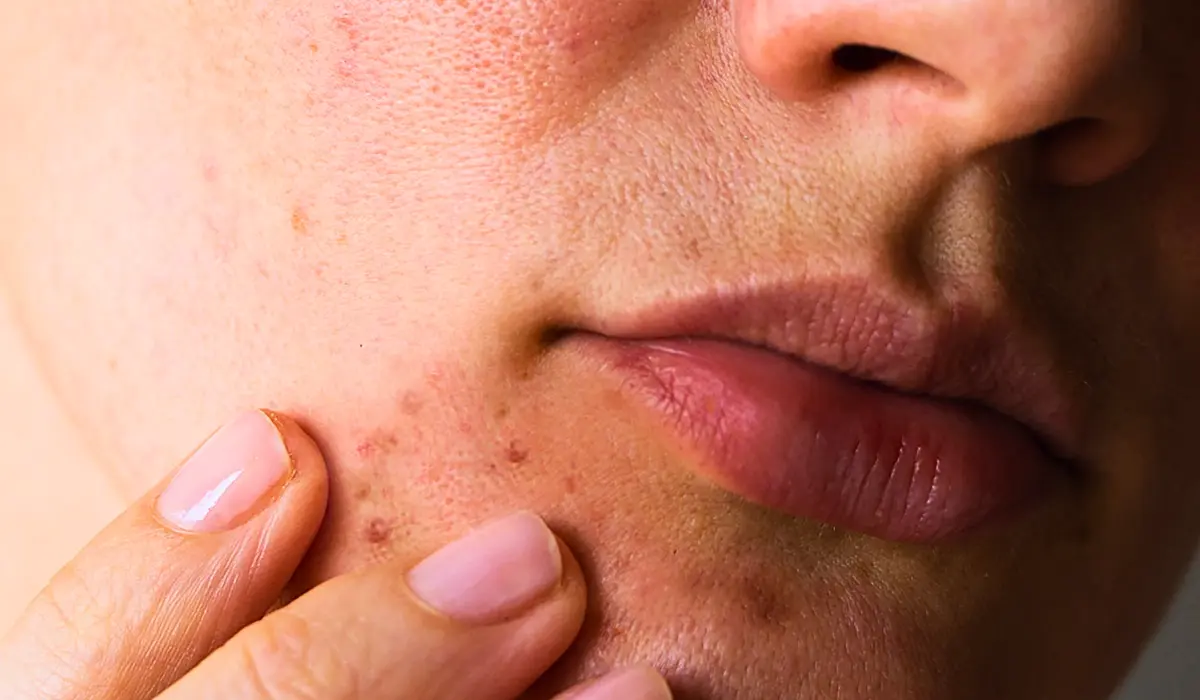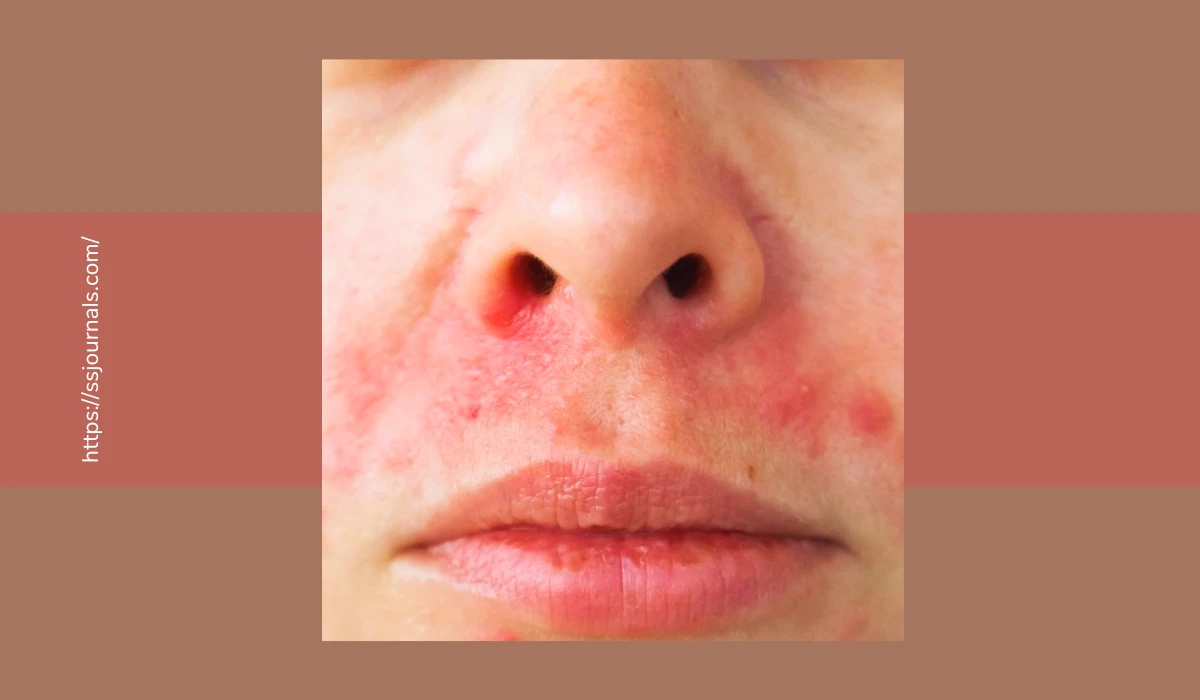Have you ever experienced a persistent rash around your mouth that just wouldn’t go away? If so, you might have been dealing with a skin condition called perioral dermatitis. This frustrating condition can be caused by various factors, from skincare products to hormonal changes. It’s characterized by redness, bumps, and sometimes even a burning sensation in the area surrounding the mouth, and it can be quite stubborn to treat.
But fear not! Once you’ve identified the culprit and started treatment, you’ll begin to notice signs perioral dermatitis is healing. The road to recovery may be gradual, but with patience and the right approach, you can successfully manage this condition and restore your skin’s health.
In this article, we’ll explore the healing stages of perioral dermatitis, what you can expect during your recovery journey, and tips for supporting the healing process along the way.
Perioral dermatitis healing Signs
Perioral dermatitis is a skin condition that affects the area around the mouth, causing redness, bumps, and sometimes even a burning sensation. While the exact perioral dermatitis causes remain unclear, factors like topical steroid use, fluoridated toothpaste, and hormonal fluctuations have been linked to its development.

Once you’ve begun treatment for perioral dermatitis, which may include topical antibiotics or anti-inflammatory creams, you’ll start to notice signs perioral dermatitis is healing.
- Reduced redness
- Decreased itching
- Flaking
- Scaling
The first healing stage is a reduction in redness and inflammation. The bumps that once covered the affected area will gradually begin to flatten and become less noticeable.
As the healing progresses, you may experience some dryness and flaking of the skin. This is a normal part of the healing process and indicates that the skin is repairing itself. To manage this stage, use a gentle, fragrance-free moisturizer to keep the skin hydrated and comfortable.
Another sign perioral dermatitis is healing is the absence of new bumps or rashes. While some bumps may linger for a while, you should notice that no new ones are forming. This is a clear indication that the treatment is working and your skin is on the mend.
Supporting Healing
It’s essential to be patient during the healing process, as it can take several weeks or even months for the skin to fully recover. Avoid picking at or scrubbing the affected area, as this can irritate the skin and prolong the healing process.
As you continue to see signs perioral dermatitis is healing, you might be tempted to reintroduce your old skincare products. However, it’s crucial to be cautious and introduce new products gradually to avoid triggering a recurrence of the skin condition.
Throughout the healing stages, it’s essential to maintain a simple, gentle skincare routine. Stick to products that are fragrance-free and specifically designed for sensitive skin. Avoid harsh exfoliants, alcohol-based toners, and any products that contain potential irritants.
Additional Tips
In addition to topical treatments and a gentle skincare routine, there are other steps you can take to support the healing process. Protect your skin from excessive sun exposure by wearing broad-spectrum sunscreen daily, as UV rays can exacerbate perioral dermatitis.
Managing stress levels can also play a role in the healing process. Stress has been linked to various skin conditions, including perioral dermatitis. Engage in stress-reducing activities like meditation, deep breathing exercises, or yoga to promote overall well-being and support your skin’s recovery.
Potential Triggers
While the signs perioral dermatitis is healing are certainly encouraging, it’s important to be aware of potential triggers that could cause a recurrence of the skin condition. One common trigger is the use of topical corticosteroids, which are often prescribed for various skin issues.
However, when used on the face, particularly around the mouth, these steroids can actually worsen perioral dermatitis.
If you’ve been using topical steroids and suspect they may be contributing to your perioral dermatitis, it’s crucial to consult with your dermatologist. They can help you safely taper off the steroids and transition to alternative treatments that won’t exacerbate the skin condition.
Another factor to consider during the healing process is your diet. While there isn’t a direct link between food and perioral dermatitis causes, some people find that certain foods can trigger or worsen their symptoms. Common culprits include spicy foods, citrus fruits, and dairy products.
If you suspect that your diet may be influencing your perioral dermatitis, try keeping a food diary to identify potential triggers. Eliminate suspicious foods one at a time and monitor your skin’s response. If you notice an improvement in your symptoms after eliminating a particular food, it may be worth avoiding it in the future.
Supplements
In addition to topical treatments and dietary modifications, incorporating certain supplements into your routine may support the healing process. Omega-3 fatty acids, found in fish oil supplements, have anti-inflammatory properties that can help soothe irritated skin. Probiotics, which promote a healthy gut microbiome, may also positively impact skin health.
As with any new supplement, it’s essential to consult with your healthcare provider before adding it to your regimen. They can help you determine the appropriate dosage and ensure that the supplement won’t interact with any medications you’re currently taking.
Mindset and Support
Throughout the healing stages, it’s crucial to maintain a positive outlook and be kind to yourself. Dealing with a skin condition like perioral dermatitis can be emotionally challenging, and it’s easy to become frustrated or discouraged when progress feels slow.
Remember that healing is a journey, and setbacks are a normal part of the process. Celebrate the small victories along the way, like noticing a reduction in redness or the absence of new bumps. Surround yourself with a supportive network of friends and family who can offer encouragement and understanding during your recovery.
Finally, don’t hesitate to reach out to your dermatologist if you have any concerns or questions during the healing process. They can provide guidance, adjust your treatment plan if necessary, and offer support as you work towards achieving healthy, clear skin.
Conclusion
As you begin to see signs perioral dermatitis is healing, it’s important to continue following your treatment plan and any recommendations from your dermatologist. Resist the urge to stop treatment prematurely, even if your skin appears to be improving, as this can lead to a relapse of the skin condition.
Dealing with perioral dermatitis can be a frustrating and challenging experience, but recognizing the signs of healing can provide hope and encouragement. As you begin to notice a reduction in redness, inflammation, and the appearance of new bumps, you’ll know that your skin is on the road to recovery. Remember to be patient, stick to a gentle skincare routine, and follow your dermatologist’s advice to support the healing process.
With time and proper care, you can bid farewell to perioral dermatitis and embrace healthy, glowing skin once again. Have you experienced perioral dermatitis? What signs of healing did you notice during your recovery journey?

